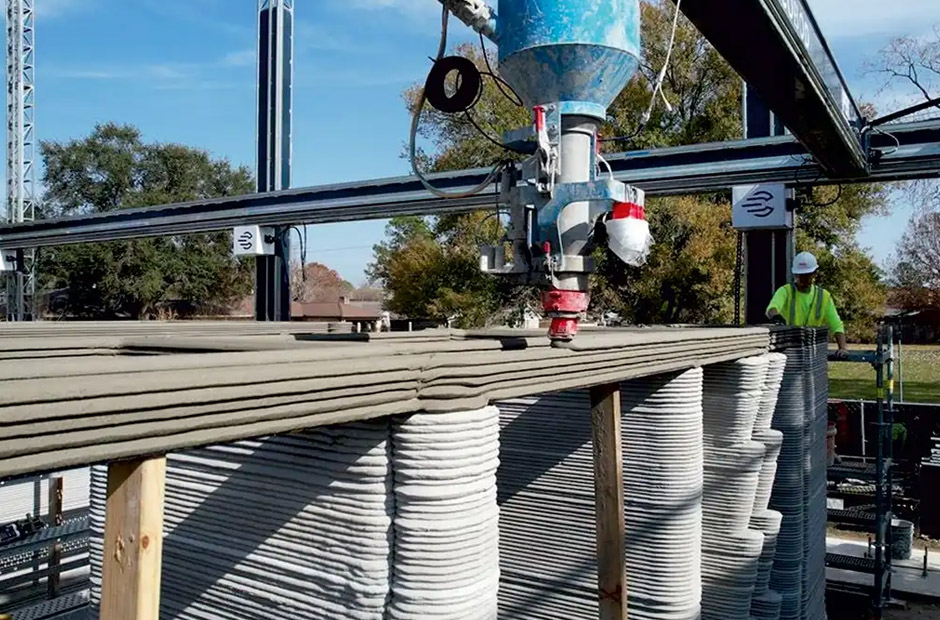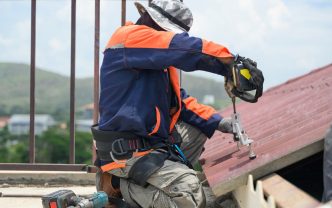As cities grow and infrastructure demands rise, sustainable construction solutions are increasingly vital. Traditional concrete, which is vital yet high in carbon emissions, is being replaced by innovative, eco-friendly alternatives. These innovations are now mainstream, driven by regulations, climate goals, and industry commitment. They offer longer-lasting, cost-effective, and greener constructions, making sustainable methods not just prospects but current standards.
Low-Carbon Cement
The manufacture of cement accounts for approximately 8% of global carbon dioxide emissions, making it one of the most significant contributors to the environmental impact of the construction industry. New formulations, such as Limestone Calcined Clay Cement (LC³), offer transformative potential by replacing high-emission clinker with alternative materials. LC³ cement, for example, can cut CO₂ emissions by up to 30% compared to conventional Portland cement—a breakthrough that is already shaping sustainable construction worldwide. This shift is increasingly being considered by concrete contractors Roseville CA, who are adopting greener methods to reduce their projects’ carbon footprint. The benefits are twofold: not only does it curb emissions, but it also enables the use of plentiful raw materials like clay and limestone, contributing to resource efficiency.
Self-Healing Concrete
Concrete cracking is an unavoidable reality, resulting in structural weaknesses, water infiltration, and increased maintenance costs. Self-healing concrete addresses this challenge by embedding bacteria or microcapsules within the concrete mix. When water enters a crack, the bacteria activate and precipitate calcium carbonate, effectively sealing the fissure. This ability for structures to repair themselves reduces maintenance needs and extends the life of bridges, tunnels, and buildings, making it a cost-effective and sustainable choice.
3D-Printed Concrete Structures
3D printing is rapidly changing traditional construction strategies by introducing efficiency, flexibility, and sustainability. In Chile, the construction of Latin America’s first 3D-printed concrete home demonstrated that complex walls could be finished in under 30 hours. Such technology minimizes waste, optimizes material usage, and enables architectural creativity that is not possible with traditional methods. These structures also require fewer workers, reducing labor costs and exposure while accelerating project timelines.
Graphene-Enhanced Concrete
Graphene, a carbon-based nanomaterial, is revolutionizing the mechanical performance of concrete. Studies show that adding even a small amount of graphene can increase concrete’s compressive strength by about 30%. This enables the building of lighter, thinner, and stronger structures, reducing the quantity of raw materials needed and thereby shrinking overall carbon emissions. The resulting concrete also offers superior water resistance and lifespan, making it particularly suited to infrastructure such as roadways and bridges.
Carbon Capture in Concrete Production
Carbon capture is being increasingly implemented in the cement industry to tackle emissions at their source. New technology developed by startups in California can intercept carbon dioxide released during cement production, repurposing it to produce even more cement. This approach alone could trim emissions by 10% in its initial stages, with projections for advanced blends reaching up to a 70% reduction. Integrating carbon capture into mainstream cement plants is a crucial step in achieving international climate goals and reducing the industry’s environmental footprint.
Ferrock: A Carbon-Negative Alternative
Ferrock is an innovative material composed of recycled industrial waste, including steel dust and glass powder. Its unique property is that it absorbs, rather than emits, CO₂ as it hardens, making the manufacturing process carbon-negative. Ferrock is not only environmentally friendly but also exceptionally strong and flexible, making it an ideal material for construction projects that demand resilience and sustainability. This new material showcases the potential to reduce waste while offering high-performance alternatives to ordinary concrete radically.
Tensioned Stone Structures
Modern engineering techniques now enable architects to revisit ancient building methods, such as the use of tensioned stone. By combining prefabricated stone blocks with steel reinforcement cables, builders create awe-inspiring structures that use vastly less concrete and steel, conserving both energy and resources. These structures are celebrated for their durability, low maintenance, and reduced environmental impact, while also delivering striking aesthetics for a range of applications, from bridges to civic monuments.
Conclusion
The era of sustainable concrete is here. With innovative materials like low-carbon cement, self-healing mixtures, and Ferrock, combined with game-changing methods such as 3D printing and carbon capture, the construction industry is charting a future where performance and planetary health are inextricably linked. As markets, regulators, and the public demand greener solutions, these advancements underscore how science and ingenuity can transform even the oldest building material for the benefit of future generations.














